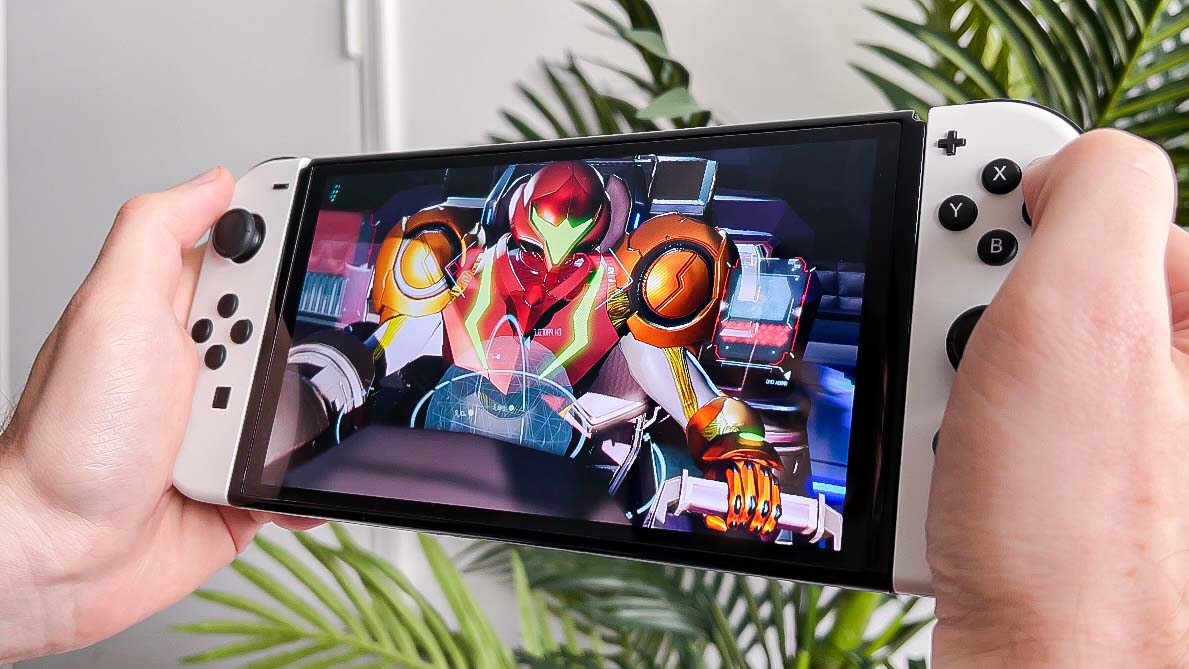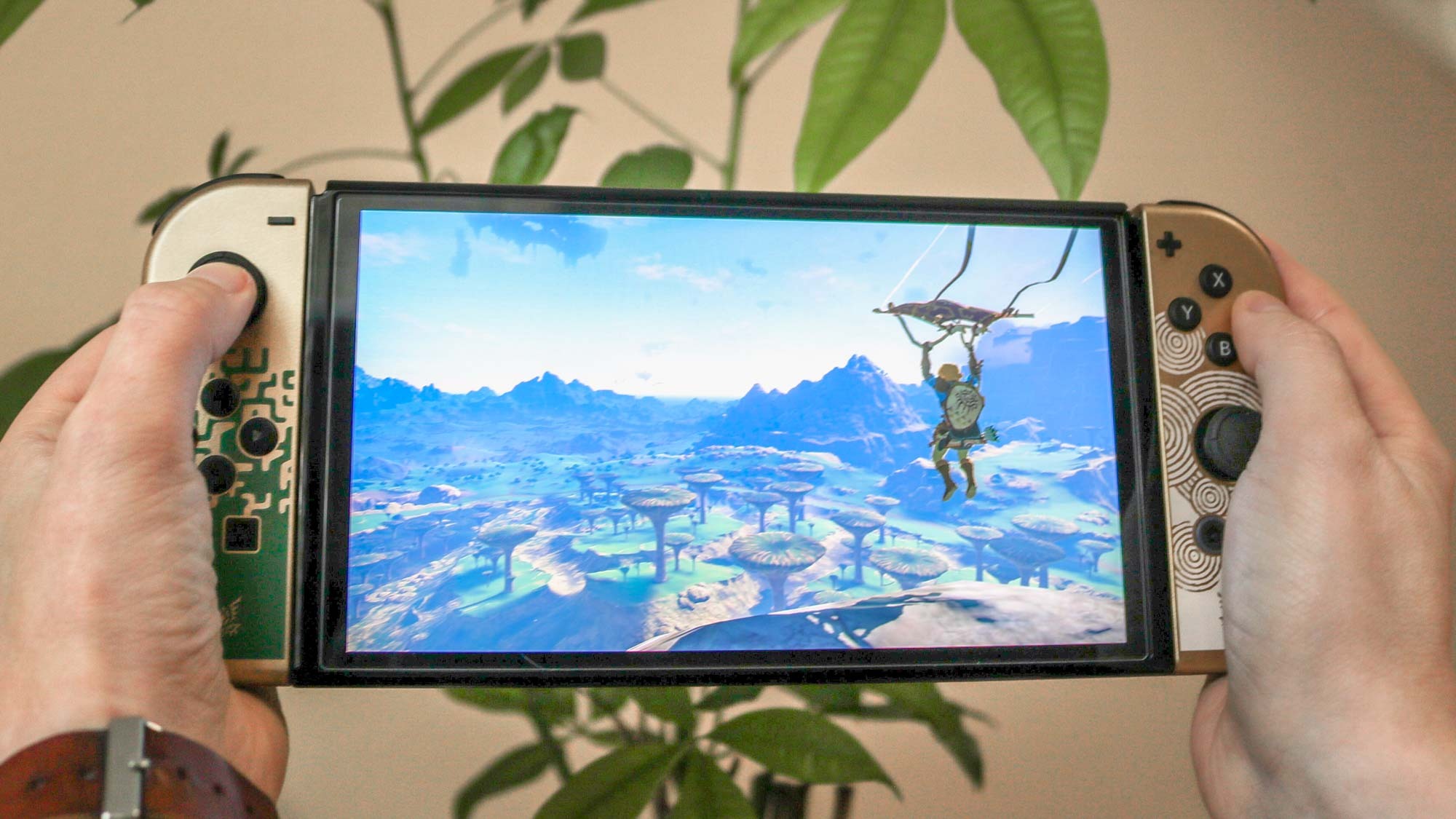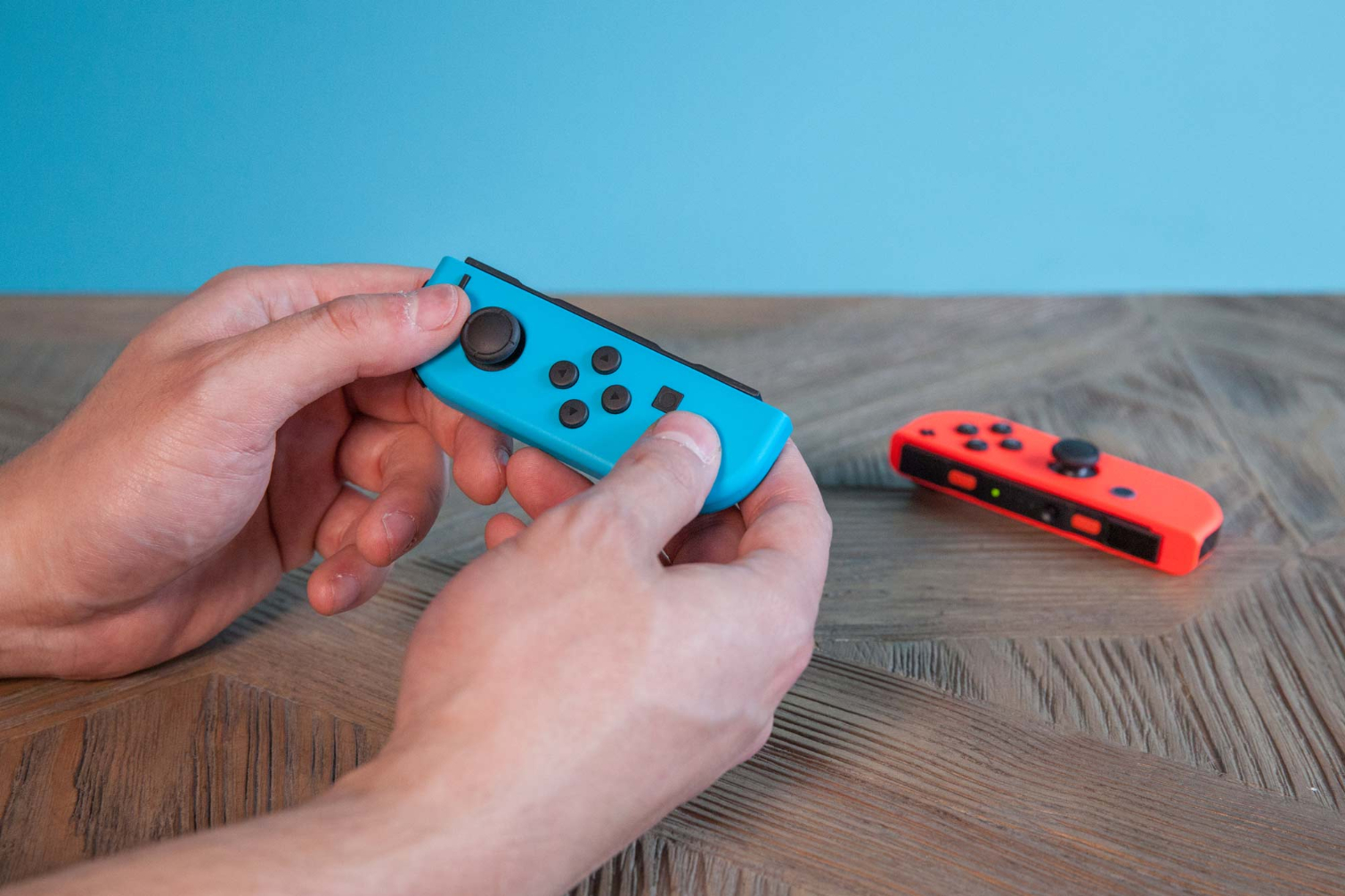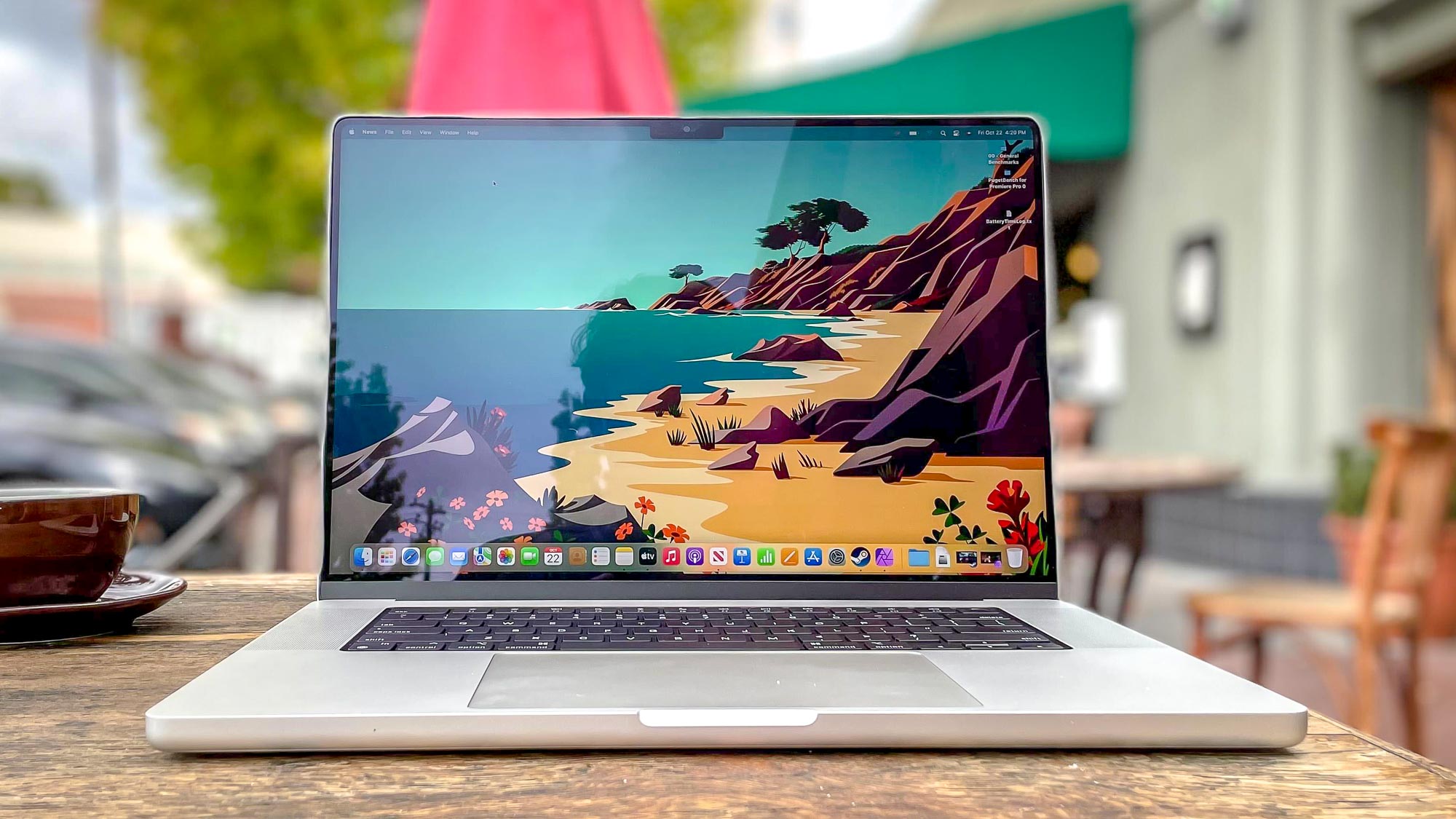Nintendo Switch 2 needs this one key feature to avoid alienating fans — here's why
Seriously, Nintendo. Don’t you dare think about omitting this essential “extra”

There are seemingly endless questions revolving around the rumored Nintendo Switch 2. Is The Big N avoiding OLED in favor of an 8-inch LCD screen? Will the original handheld hybrid’s JoyCons get a comprehensive redesign? Will it cost $400? Will Nintendo’s latest console support Nvidia DLSS? And mostly, just when in the hell is this thing coming out?!
Math may not be my strong point, yet I’m fairly certain the original Nintendo Switch first launched when our ancestors were laying a caveman smackdown on herds of wooly mammoths. Alright, it was actually spring 2017, but it feels like an Ice Age ago. That’s not to say the ultra flexible, hugely popular gaming device and its colossal library should be forgotten when Nintendo Switch 2 hits the scene. Far from it.
There’s been talk of Switch 2 backwards compatibility for a while now. The most recent scuttlebutt comes from Universo Nintendo, with the Portuguese site claiming the as yet announced console will offer back compat features that will be compatible with both Switch 1 discs and digital copies. Via translation, Universo also claims that developers will have the chance to “enhance” their titles to take advantage of Switch 2’s added grunt. Kind of like how select PS4 games can be played at an unlocked 60 frames per second on the PS5 — Elden Ring and The Last Guardian are both shining examples of last-gen games that run so much better on the latest PlayStation hardware.
Developers may have the chance to 'enhance' their games to take advantage of Switch 2’s added grunt.
The simple truth is this: Nintendo can’t afford to shed its gargantuan baked-in fanbase. According to the most recent reports, the Japanese giant has sold around a staggering 140m Switch units, making it the third-best-selling video game console of all time (thanks, IGN Nordic). To add to that head-spinning number, there are also well over 10,000 games available for the Switch 1. If Nintendo was to launch a Switch 2 that not only didn’t support these games but also refused to support the original handheld’s JoyCons and Switch Pro Controller, the company would be forced to deal with an almost unimaginably ticked off global community.
Just take Mario Kart 8 Deluxe as the biggest banana peel Nintendo has to avoid slipping on when it comes to its latest transition between console generations. Despite the fact the portly plumber’s arcade racer is merely an excellent refresh of the Wii U version — granted, Nintendo has added tons of additional DLC tracks over the past two years — it’s the best-selling game on Switch. Deluxe has shifted over 60m copies, and there’s little doubt in my mind a decent chunk of hardcore fans probably double dipped on the two generation-crossing editions. I know I’m certainly guilty of that.
Kill Switch

Nintendo has often been accused of adopting a greedy stance with the Switch 1. Multiple Wii U games have often been released at full price (or certainly close to) on the firm’s latest device, including Pikmin 3, Yoshi’s Crafted World, Super Mario Maker and Donkey Kong Country: Tropical Freeze. Hell, even The Legend of Zelda: Breath of the Wild started off life on the Wii U, which is why it launched on Nintendo’s doomed tablet-pushing console and the Switch at the same time.
These ports have often felt like they received the minimum amount of love. The probably primary factors behind this? Most of these games are excellent, there are a lot of people who missed out on them the first time out and Nintendo knows it can get away with a token resolution bump with perhaps a bonus mode or two.
Without a proper Xbox or PlayStation handheld (no, I don’t count the PS Portal), The Switch 1 has the handheld console market to itself. Obviously the likes of Steam Deck, the Asus ROG Alley and Lenovo Legion Go are great devices, yet I view them more as direct competitors for gaming PCs than I do Nintendo’s little machine.
Nintendo bet the farm with the Switch, won and now has acres of land dotted with chickens that lay golden eggs
The Kyoto-based publisher once again pivoted against traditional industry logic and went with a gaming system that was massively underpowered compared to its rivals. It bet the farm, won and now has acres of land dotted with chickens that lay golden eggs. This tactic worked for the Nintendo Wii and it clearly works for Switch 1. The big difference between the two mass market-friendly devices? The Wii let you play Nintendo GameCube discs on it (the firm’s previous home console), whereas the Switch doesn’t allow you to play Wii U games — hardly surprising, seeing as it lacks a CD drive.
While this decision is unlikely to have affected Nintendo’s bottom line all that much in the Wii U/GameCube case, it was at least a welcome gesture to fans of the previous generation who had stuck by its little purple box for years as it got destroyed by the runaway success of the PlayStation 2. The Wii U was clearly a commercial disaster, so the choice to abandon a flop and its software library when designing the Switch is understandable from a business standpoint. Even if it does spit in the face of Nintendo’s past approach to backwards compatibility. After all, the Nintendo 2DS, Nintendo 3DS, Wii and Wii U all supported back compat to varying degrees.
No way back compat

That’s where Switch 1 stands out as the awkward exception: It’s a rare example of Nintendo abandoning its recent past. Ultimately, this decision hasn’t hurt the balance sheet and is probably only limited to the discontented murmurings of hardcore fans over perceived boardroom-level greed.
Of course, the Switch and its massive portfolio of games is an entirely different beast to the Wii U. The handheld hybrid has been a sales sensation, easily cementing itself as the family gaming system of the last decade. Nintendo has to keep said families (and its more dedicated fanbase) on board for the immediate future. Both early and late Switch 2 adopters will want to be able to play their Switch 1 libraries on the new console. Preventing them from doing so will result in a significant backlash. An OLED screen is a luxury; backwards compatibility is a necessity.
Please excuse me for taking the latest Nintendo Switch 2 back compat rumors with a heaping dose of sodium chloride for the time being, though. For a company that’s shown such an appetite for mid-gen hardware refreshes — hello, Nintendo Switch Lite and Nintendo Switch OLED! — I worry Nintendo could make its upcoming console a closed off system, before encouraging you to buy "remastered" versions of the best Switch games.
Cynical, I know.
More from Tom's Guide
Sign up to get the BEST of Tom's Guide direct to your inbox.
Get instant access to breaking news, the hottest reviews, great deals and helpful tips.

Dave is a computing editor at Tom’s Guide and covers everything from cutting edge laptops to ultrawide monitors. When he’s not worrying about dead pixels, Dave enjoys regularly rebuilding his PC for absolutely no reason at all. In a previous life, he worked as a video game journalist for 15 years, with bylines across GamesRadar+, PC Gamer and TechRadar. Despite owning a graphics card that costs roughly the same as your average used car, he still enjoys gaming on the go and is regularly glued to his Switch. Away from tech, most of Dave’s time is taken up by walking his husky, buying new TVs at an embarrassing rate and obsessing over his beloved Arsenal.
